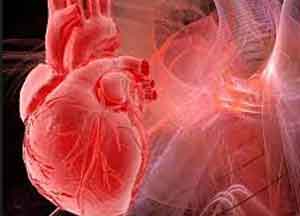- Home
- Editorial
- News
- Practice Guidelines
- Anesthesiology Guidelines
- Cancer Guidelines
- Cardiac Sciences Guidelines
- Critical Care Guidelines
- Dentistry Guidelines
- Dermatology Guidelines
- Diabetes and Endo Guidelines
- Diagnostics Guidelines
- ENT Guidelines
- Featured Practice Guidelines
- Gastroenterology Guidelines
- Geriatrics Guidelines
- Medicine Guidelines
- Nephrology Guidelines
- Neurosciences Guidelines
- Obs and Gynae Guidelines
- Ophthalmology Guidelines
- Orthopaedics Guidelines
- Paediatrics Guidelines
- Psychiatry Guidelines
- Pulmonology Guidelines
- Radiology Guidelines
- Surgery Guidelines
- Urology Guidelines
Increased hsCRP an indicator for residual risk after MI

The data in CANTOS supported the inflammatory hypothesis of atherothrombosis but it remains uncertain which patients benefit the most from inflammation reduction.Ridker et al conducted a study and sought to determine whether the benefits of canakinumab in CANTOS were related to the magnitude or level of hsCRP reduction achieved by individual trial participants.The researchers have found out that the magnitude of hsCRP reduction following a single dose of canakinumab may provide a simple clinical method to identify individuals most likely to accrue the largest cardiovascular and cancer benefits from continued long-term treatment.Canakinumab is a human therapeutic monoclonal antibody targeting interleukin-1ß (IL-1ß), a key cytokine in the inflammatory pathway that drives the interleukin-6 (IL-6) signaling pathway known to drive the continued progression of inflammatory atherosclerosis. In the placebo-controlled CANTOS trial, treatment with canakinumab (at either a 150 mg or 300 mg dose once every 3 months) reduced major adverse cardiovascular event (MACE) rates by 15%, reduced high-sensitivity C-reactive protein (hsCRP) by 39%, but had no effect on lipid levels.
CANTOS enrolled 10,061 patients with a history of myocardial infarction and hsCRP ≥ 2 mg/L and randomly allocated them to placebo or to one of three canakinumab doses (50 mg, 150 mg, and 300 mg given subcutaneously every 3 months).
Patients treated with canakinumab who had an on-treatment hs-CRP <2 mg/L at 3 months had a 25% relative risk reduction in MACE (adjusted hazard ratio [HR], 0.75, p<0.0001) and 31% risk reduction in CV death (aHR 0.69, p=0.0004) and all-cause mortality (aHR 0.69, p<0.0001).
In contrast, those with an on-treatment hsCRP above the 2-mg clinical threshold had only a nonsignificant 10% reduction in MACE (aHR, 0.90; p=0.11), and no apparent reduction in CV death (aHR, 0.99; p=0.95) or all-cause mortality (aHR, 1.05; p=0.56).
The proportions of those treated who achieved hsCRP levels < 2 mg/L were 44%, 55%, and 65% in the 50mg, 150mg, and 300mg canakinumab groups, respectively.
Similar differential effects were seen for the prespecified secondary cardiovascular endpoint (MACE plus hospitalization for unstable angina requiring unplanned revascularization) and in sensitivity analyses that looked at alternative thresholds for on-treatment hsCRP (e.g. median reductions, 50% or greater reductions, etc.)
In patients who achieved hsCRP below the median, a 71% reduction in incident lung cancer was seen, while no significant benefit (compared to placebo) was noted for those with on-treatment hsCRP above the median.
The main hazard of canakinumab – a small but statistically significant increase in fatal infection – was not related to on-treatment hsCRP levels.
The researchers concluded “Our current analysis suggests that the magnitude of hsCRP reduction following a single dose of canakinumab may provide a simple clinical method to identify individuals most likely to accrue the largest cardiovascular and cancer benefits from continued long-term treatment” .“We believe these observations have clinical importance not only for the pathophysiology of inflammation—the fundamental thing we are most interested in—but also for future drug development, but immediately perhaps for patient selection, cost-effectiveness, and, most importantly, personalized medicine.”
The experts feel that if canakinumab is eventually approved to reduce cardiovascular disease risk, hsCRP measurement at 3 months might well help guide discussions about cost-effectiveness with longer term treatment. Those reaching goals are more likely to succeed. In the meantime, clinicians and patients need to lower inflammation by achieving more success in smoking cessation, weight loss, and increased exercise.”
- 1. PM Ridker, Presenter. AHA 2017 Late-Breaking Clinical Trial: Residual inflammatory risk and residual cholesterol risk: Critical analysis from the CANTOS trial. AHA 2017. 13 Nov 2017.
- 2. PM Ridker, JG MacFadyen, BM Everett, et al: Relationship of C-reactive protein reduction to cardiovascular event reduction following treatment with canakinumab: a secondary analysis from the CANTOS randomised controlled trial. Lancet. 13 Nov 2017. (Published online ahead of print.) 29146124
- 3. ED Michos, RS Blumenthal: Treatment concentration of high-sensitivity C-reactive protein. Lancet. 13 Nov 2017. (Published online ahead of print.) 29146121

Disclaimer: This site is primarily intended for healthcare professionals. Any content/information on this website does not replace the advice of medical and/or health professionals and should not be construed as medical/diagnostic advice/endorsement or prescription. Use of this site is subject to our terms of use, privacy policy, advertisement policy. © 2020 Minerva Medical Treatment Pvt Ltd